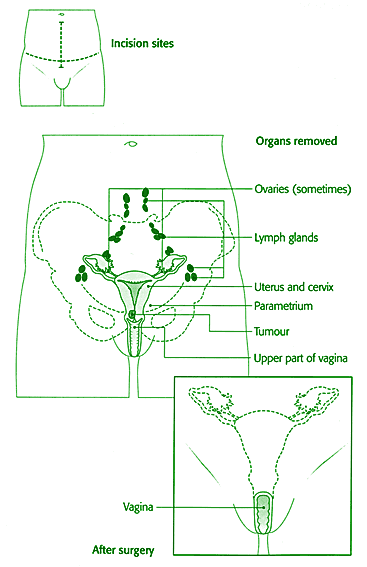|
Radical hysterectomy
• Radical hysterectomy, sometimes called Wertheim's hysterectomy,
is performed for cancer of the cervix. Advanced stages of this cancer
are best treated by radiotherapy (X-ray treatment) and chemotherapy.
• Radical hysterectomy involves removing the uterus, Fallopian
tubes, cervix, the very top part of the vagina, lymph glands in the
pelvis and, sometimes, the ovaries. The vagina may be shortened as a
result.
• During the operation, a catheter is passed either up through
the uretha or though the abdomen and into the bladder, to drain off
the urine. You may have another tube in your abdomen or vagina to drain
any slight bleeding. The catheter is usually left in for at least 5
days, and the other tube is usually left in place for 1-2 days. It sometimes
takes several weeks before your bladder begins to work properly again,
and changes in bladder sensation and function are sometimes permanent.
• You will be given painkillers to relieve the pain after the operation.
Because your ovaries make the female hormones oestrogen and progesterone,
you may also be prescribed hormone-replacement therapy (HRT), if your
ovaries have been removed.
• A course of radiotherapy and chemotherapy may be necessary after
surgery.
• After the operation, avoid having penetrative sex for about 6
weeks to allow the top of the vagina to heal fully.
|
|
 |




